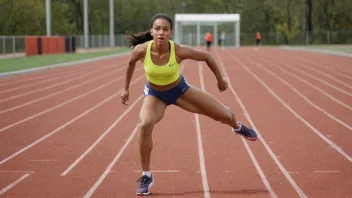Training is an essential part of any athlete's routine, but safety should always come first. Wearing proper safety gear while training not only protects athletes from injuries but also enhances their performance by allowing them to focus on their techniques without the fear of getting hurt. Below are some frequently asked questions regarding the importance of wearing safety gear while training.
Why is it crucial to wear safety gear during training?
Wearing safety gear is vital as it helps prevent injuries that can occur during training sessions. It acts as a protective barrier against potential accidents, whether it's a fall, collision, or equipment malfunction. Proper gear can significantly reduce the severity of injuries and promote a safer training environment.
What types of safety gear should athletes consider?
Depending on the sport or activity, the types of safety gear may vary. Common examples include:
- Helmets: Essential for sports like cycling, football, and motorsports.
- Visors: Protects the face and eyes from debris, particularly in contact sports.
- Padding: Used in sports such as hockey, football, and martial arts to cushion impacts.
- Footwear: Proper shoes can prevent slips, falls, and provide adequate support.
- Wrist guards and knee pads: Important in skateboarding, rollerblading, and other high-risk sports.
How does wearing safety gear improve athletic performance?
When athletes feel secure in their equipment, they are more likely to push their limits and focus on their performance rather than worrying about potential injuries. Proper gear can enhance confidence, allowing athletes to train harder and more effectively, ultimately leading to improved results.
Are there specific safety gear recommendations for different sports?
Yes, different sports have unique safety gear requirements. For instance:
- Cycling: A helmet, gloves, and protective eyewear are essential.
- Football: A well-fitted helmet, shoulder pads, and mouthguard are crucial.
- Winter Sports: Helmets and goggles are important for skiing and snowboarding.
- Motorsports: Fire-resistant suits and helmets are mandatory.
- Outdoor Activities: Depending on the activity, items like harnesses, helmets, and proper footwear may be necessary.
Can wearing safety gear impact an athlete's mobility?
While some athletes worry that safety gear may restrict movement, modern advancements in technology have made it possible to create lightweight and flexible protective equipment. Properly fitted gear should not hinder mobility; instead, it should enhance performance by providing protection without compromising movement.
What are the consequences of not wearing safety gear?
Neglecting to wear safety gear can lead to severe injuries that may require long recovery times, impact performance, and even lead to long-term health issues. In some cases, injuries could end an athlete's career. It is always better to prioritize safety over comfort or style when training.
How can athletes ensure their safety gear is effective?
To ensure effectiveness, athletes should regularly check their gear for wear and tear. It is also important to select equipment that meets safety standards specific to their sport. Additionally, getting a proper fit from a knowledgeable source can help maximize the protective benefits of the gear.
What role do coaches and trainers play in promoting safety gear usage?
Coaches and trainers play a crucial role in educating athletes about the importance of safety gear. They should encourage their athletes to wear appropriate equipment and lead by example. By prioritizing safety, they can foster a culture of protection and awareness within their teams.
In conclusion, the importance of wearing proper safety gear while training cannot be overstated. It not only protects athletes from potential injuries but also allows them to focus on their performance. By making safety a priority, athletes can enhance their training experience and ultimately achieve better results.






